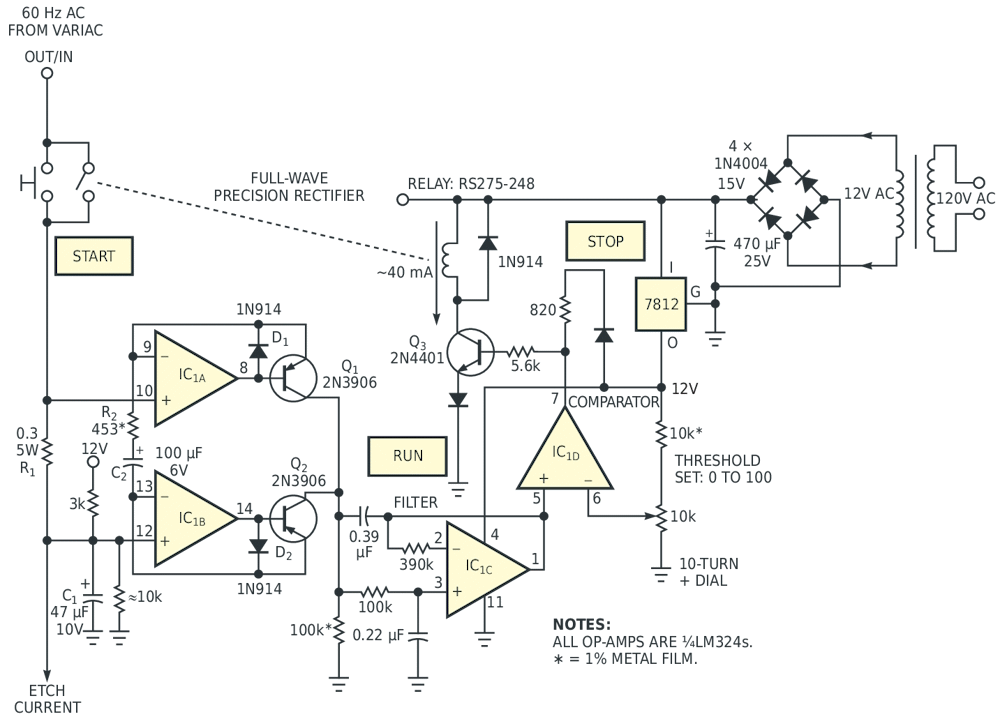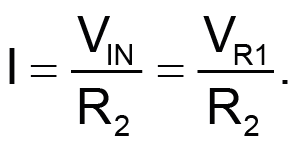At its invention roughly four decades ago, STM (scanning tunneling microscopy) created a sensation because it was the first technology to make atomic-scale-resolution imaging a routine procedure. An essential requirement for the practical application of STM is some means for the reproducible fabrication of supersharp, atomic-scale needle tips. One way to make the tips is to etch them from short pieces of platinum wire in a calcium-chloride electrolyte bath. Applying an ac voltage between the electrolyte and the wire generates a chemical reaction accompanied by vigorous fizzing at the surface of the liquid. This reaction etches the platinum, causing the wire to neck down and eventually break into two pieces. If the etching current turns off within milliseconds of the wire's breaking, then the point of separation remains supersharp. This sharp point is suitable for use as a high-quality STM tip.
Swift interruption of the current, however, is essential to tip sharpness, because only a few milliseconds of overetch suffice to dull and ruin the tip. The circuit in Figure 1 achieves precision etch-termination by using relay-actuated etch turn-off based on the sudden drop in etch current that occurs when the wire parts. Precision sensing and full-wave rectification of the etch current is critical to circuit operation; the circuit achieves this precision by using an unusual differential-input rectifier.
 |
|
| Figure 1. | This etch-control circuit produces supersharp microneedles by terminating the etching process at precisely the right time. |
Precision, full-wave rectification of low-level ac signals to a dc format is a common signal-processing function; many classic rectifier topologies accomplish this function. But the accuracy of typical precision rectifiers depends on the precise matching of resistor ratios. Moreover, op-amp input-offset voltages limit the accuracy of these standard circuits. The offset error generally limits sensitivity to input spans no smaller than some hundreds of millivolts.
The converter in this design avoids these faults and adds a number of new and useful features. The differential ac signal to be rectified goes to the noninverting inputs of op amps IC1A and IC1B (Figure 1). Rectification proceeds as follows: Consider a signal excursion, VIN, that drives IC1A’s input more positive than IC1B’s. Amplifier IC1A responds by driving diode D1 into conduction, thereby forcing R2 to track the input. Amplifier IC1B responds with a negative output excursion, forcing transistor Q2 to conduct sufficiently to cause the inverting input of IC1A and the bottom end of R1 to track. Q2’s emitter current, and, therefore, collector current is then

Q2 is a high-alpha transistor.
The respective roles of the amplifiers reverse for input excursions of the opposite polarity, with D2 and Q1 conducting. The match of Q1 and Q2 alpha values, which is typically 0.3% or better, is the only limit on rectification symmetry. This precision rectifier is therefore unique in that neither rectification symmetry nor common-mode rejection, which exceeds 60 dB, depends on resistor matching. Meanwhile, C2 affords ac coupling, which eliminates offset-voltage-related errors. Operation of the rest of the etch controller is straightforward. IC1C implements a unity-gain, two-pole Butterworth lowpass filter for good ripple attenuation without excessive time delay. Etching begins when you push the Start pushbutton. The etch-current comparator, IC1D, then drives Q3 to keep the relay energized until the etch current drops below the level set by the Threshold Set potentiometer. IC1D’s output then drops low, turning Q3 off, opening the relay, and terminating the etch. The result is a serviceable, atomically sharp scan tip almost every time.